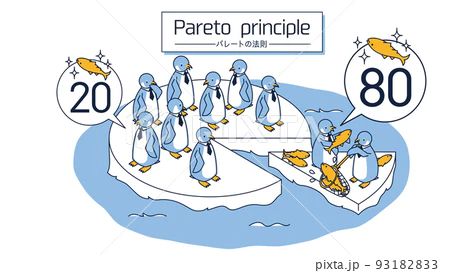酸欠少女さユりさんは、2024年9月20日に逝去された日本の女性シンガーソングライターです。彼女は「酸欠世代の心情を歌う2.5次元パラレルシンガーソングライター」を名乗り、特徴的なハスキーボイスと、翳りの中に希望も感じさせる歌詞で、多くの若者から支持を集めていました。
代表曲には、「ミカヅキ」「フラレガイガール」「平行線」「航海の唄」などがあり、アニメ「僕のヒーローアカデミア」や「Fate/EXTRA Last Encore」などの主題歌も担当しました。
彼女の歌声と歌詞は、生きづらさを感じている人々にとって、共感と癒しを与えるものでした。彼女の早すぎる死は、多くのファンに深い悲しみを与えましたが、彼女の音楽はこれからも多くの人々の心に響き続けるでしょう。
**主な活動**
* **音楽活動:**
* 2015年: メジャーデビュー
* 2017年: 1stアルバム「ミカヅキの航海」リリース
* 2018年: 日本武道館公演
* 2023年: Zeppツアー「酸欠衝動」開催
* **その他:**
* ラジオパーソナリティ
* エッセイ執筆
**特徴**
* **「酸欠少女」というキャッチコピー:** 現代社会の息苦しさや閉塞感を表現
* **特徴的なハスキーボイス:** 感情を揺さぶる力強さ
* **翳りと希望が共存する歌詞:** 多くの若者の共感を呼ぶ
**死後**
* 多くのファンや関係者が追悼
* posthumous single「紫陽花」リリース
* トリビュートアルバム発売予定
さユりさんの音楽は、彼女が亡くなった後も、多くの人々に愛され、語り継がれています。彼女の歌声が、これからも多くの人の心に寄り添い続けることを願っています。
もし、さユりさんの特定の楽曲や活動について詳しく知りたい場合は、遠慮なく質問してください。
“Acid-Lack Girl” Sayuri was a Japanese female singer-songwriter who passed away on September 20, 2024. She called herself a “2.5-dimensional parallel singer-songwriter who sings about the feelings of the oxygen-deprived generation,” and gained support from many young people with her characteristic husky voice and lyrics that suggest hope within the shadows.
Her representative songs include “Mikazuki,” “Furaregai Girl,” “Parallel Line,” and “Koukai no Uta.” She also performed theme songs for anime such as “My Hero Academia” and “Fate/EXTRA Last Encore.”
Her singing voice and lyrics provided empathy and healing for people who were struggling. Her untimely death brought deep sadness to many fans, but her music will continue to resonate in the hearts of many people.
Main Activities
-
Music Activities:
- 2015: Major debut
- 2017: Released 1st album “Mikazuki no Koukai”
- 2018: Nippon Budokan concert
- 2023: Zepp tour “Sanketsu Shoudou”
-
Others:
- Radio personality
- Essay writing
Characteristics
- Catchphrase “Acid-Lack Girl”: Expresses the suffocation and stagnation of modern society
- Characteristic husky voice: Power to stir emotions
- Lyrics with coexistence of shadow and hope: Resonates with many young people
After Death
- Many fans and people involved paid tribute
- Posthumous single “Ajisai” released
- Tribute album planned for release
Sayuri’s music continues to be loved and talked about by many people even after her passing. I hope her singing voice will continue to be close to the hearts of many people.
If you would like to know more about Sayuri’s specific songs or activities, please feel free to ask.
“La Chica de la Falta de Oxígeno” Sayuri fue una cantautora japonesa que falleció el 20 de septiembre de 2024. Se autodenominaba “una cantautora paralela de 2.5 dimensiones que canta sobre los sentimientos de la generación con falta de oxígeno”, y ganó el apoyo de muchos jóvenes con su característica voz ronca y letras que sugieren esperanza dentro de las sombras.
Sus canciones representativas incluyen “Mikazuki”, “Furaregai Girl”, “Parallel Line” y “Koukai no Uta”. También interpretó temas musicales para animes como “My Hero Academia” y “Fate/EXTRA Last Encore”.
Su voz y sus letras proporcionaban empatía y consuelo a las personas que estaban luchando. Su prematura muerte causó una profunda tristeza a muchos fans, pero su música seguirá resonando en los corazones de muchas personas.
Principales Actividades
-
Actividades Musicales:
- 2015: Debut principal
- 2017: Lanzamiento del 1er álbum “Mikazuki no Koukai”
- 2018: Concierto en el Nippon Budokan
- 2023: Gira Zepp “Sanketsu Shoudou”
-
Otros:
- Personalidad de radio
- Escritura de ensayos
Características
- Eslogan “La Chica de la Falta de Oxígeno”: Expresa la sofocación y el estancamiento de la sociedad moderna
- Característica voz ronca: Poder para conmover las emociones
- Letras con coexistencia de sombra y esperanza: Resuena con muchos jóvenes
Después de su Muerte
- Muchos fans y personas involucradas rindieron homenaje
- Lanzamiento del sencillo póstumo “Ajisai”
- Álbum tributo planeado para su lanzamiento
La música de Sayuri sigue siendo amada y comentada por muchas personas incluso después de su fallecimiento. Espero que su voz siga estando cerca de los corazones de muchas personas.
Si deseas saber más sobre canciones o actividades específicas de Sayuri, no dudes en preguntar.
“A Garota da Falta de Oxigênio” Sayuri foi uma cantora e compositora japonesa que faleceu em 20 de setembro de 2024. Ela se autodenominava “uma cantora e compositora paralela de 2,5 dimensões que canta sobre os sentimentos da geração com falta de oxigênio” e ganhou o apoio de muitos jovens com sua voz rouca característica e letras que sugerem esperança dentro das sombras.
Suas músicas representativas incluem “Mikazuki”, “Furaregai Girl”, “Parallel Line” e “Koukai no Uta”. Ela também interpretou músicas-tema para animes como “My Hero Academia” e “Fate/EXTRA Last Encore”.
Sua voz e suas letras proporcionavam empatia e cura para pessoas que estavam lutando. Sua morte prematura trouxe profunda tristeza a muitos fãs, mas sua música continuará a ressoar nos corações de muitas pessoas.
Principais Atividades
-
Atividades Musicais:
- 2015: Estreia principal
- 2017: Lançamento do 1º álbum “Mikazuki no Koukai”
- 2018: Show no Nippon Budokan
- 2023: Turnê Zepp “Sanketsu Shoudou”
-
Outras:
- Personalidade de rádio
- Escrita de ensaios
Características
- Slogan “A Garota da Falta de Oxigênio”: Expressa a sufocação e a estagnação da sociedade moderna
- Voz rouca característica: Poder para despertar emoções
- Letras com coexistência de sombra e esperança: Ecoa em muitos jovens
Após a Morte
- Muitos fãs e pessoas envolvidas prestaram homenagem
- Lançamento do single póstumo “Ajisai”
- Álbum tributo planejado para lançamento
A música de Sayuri continua sendo amada e comentada por muitas pessoas, mesmo após sua morte. Espero que sua voz continue próxima dos corações de muitas pessoas.
Se você quiser saber mais sobre músicas ou atividades específicas de Sayuri, sinta-se à vontade para perguntar.
“La fille en manque d’oxygène” Sayuri était une chanteuse et compositrice japonaise décédée le 20 septembre 2024. Elle se décrivait comme une “auteure-compositrice-interprète parallèle en 2,5 dimensions qui chante les sentiments de la génération en manque d’oxygène” et a gagné le soutien de nombreux jeunes avec sa voix rauque caractéristique et ses paroles suggérant l’espoir dans l’ombre.
Ses chansons représentatives incluent “Mikazuki”, “Furaregai Girl”, “Parallel Line” et “Koukai no Uta”. Elle a également interprété des chansons thèmes pour des animes tels que “My Hero Academia” et “Fate/EXTRA Last Encore”.
Sa voix et ses paroles apportaient empathie et réconfort aux personnes en difficulté. Sa mort prématurée a causé une profonde tristesse à de nombreux fans, mais sa musique continuera de résonner dans le cœur de nombreuses personnes.
Principales activités
-
Activités musicales :
- 2015 : Débuts majeurs
- 2017 : Sortie du 1er album “Mikazuki no Koukai”
- 2018 : Concert au Nippon Budokan
- 2023 : Tournée Zepp “Sanketsu Shoudou”
-
Autres :
- Animatrice radio
- Rédaction d’essais
Caractéristiques
- Slogan “La fille en manque d’oxygène” : Exprime la suffocation et la stagnation de la société moderne
- Voix rauque caractéristique : Le pouvoir de susciter des émotions
- Paroles avec coexistence d’ombre et d’espoir : Résonne avec de nombreux jeunes
Après sa mort
- De nombreux fans et personnes impliquées lui ont rendu hommage
- Sortie du single posthume “Ajisai”
- Album hommage prévu
La musique de Sayuri continue d’être aimée et commentée par de nombreuses personnes, même après sa mort. J’espère que sa voix continuera d’être proche du cœur de nombreuses personnes.
Si vous souhaitez en savoir plus sur des chansons ou des activités spécifiques de Sayuri, n’hésitez pas à demander.
“Msichana Asiyepata Oksijeni ya Kutosha” Sayuri alikuwa mwimbaji na mtunzi wa nyimbo wa Kijapani ambaye alifariki mnamo Septemba 20, 2024. Alijitambulisha kama “mwimbaji na mtunzi wa nyimbo sambamba wa pande 2.5 anayeimba hisia za kizazi kisichopata oksijeni ya kutosha” na akapata uungwaji mkono kutoka kwa vijana wengi kwa sauti yake ya kipekee yenye ukwaru na maneno yanayoashiria matumaini ndani ya giza.
Nyimbo zake maarufu ni pamoja na “Mikazuki,” “Furaregai Girl,” “Parallel Line,” na “Koukai no Uta.” Pia alitoa nyimbo za mada kwa anime maarufu kama “My Hero Academia” na “Fate/EXTRA Last Encore.”
Muziki wake ulitoa faraja na uelewa kwa wale wanaopambana na changamoto za maisha. Kifo chake cha mapema kiliacha pengo katika mioyo ya mashabiki wake wengi, lakini muziki wake utaendelea kuhamasisha na kufariji kwa vizazi vijavyo.
Shughuli Muhimu
-
Kazi ya Muziki:
- 2015: Kutolewa kwa kwanza
- 2017: Akatoa albamu yake ya kwanza, “Mikazuki no Koukai”
- 2018: Alifanya onyesho katika ukumbi maarufu wa Nippon Budokan
- 2023: Alianza ziara ya Zepp, “Sanketsu Shoudou”
-
Shughuli Nyingine:
- Mtangazaji wa redio
- Mwandishi wa insha
Sifa bainifu
- Jina la utani “Msichana Asiyepata Oksijeni ya Kutosha”: Lilichukua hisia za kukosa hewa na vilio vilivyoenea katika jamii ya kisasa.
- Sauti yake ya kipekee yenye ukwaru: Iliwasilisha nguvu mbichi ya kihisia iliyowagusa wasikilizaji.
- Maneno yaliyounganisha giza na matumaini: Yalionyesha uzoefu wa vijana wengi, na kukuza hisia ya kina ya uhusiano.
Urithi
- Kufuatia kifo chake, mashabiki na wafanyakazi wenzake wengi walitoa heshima kwa kumbukumbu yake.
- Wimbo wa baada ya kifo, “Ajisai,” ulitolewa.
- Albamu ya heshima kwa sasa inatengenezwa.
Hata akiwa hayupo, muziki wa Sayuri unaendelea kuthaminiwa na kusherehekewa. Nyimbo zake zitabaki milele kuwa chanzo cha faraja na msukumo kwa watu kote ulimwenguni.
Ikiwa ungependa kuzama zaidi katika nyimbo maalum au vipengele vya kazi ya Sayuri, jisikie huru kuuliza!
“缺氧少女”Sayuri是一位日本女歌手兼词曲作者,于2024年9月20日不幸离世。她自称为“唱出缺氧世代心声的2.5次元平行时空创作歌手”,以其独特的沙哑嗓音和在黑暗中蕴含希望的歌词,赢得了众多年轻人的支持。
她的代表作包括《ミカヅキ》、《フラレガイガール》、《平行線》和《航海の唄》等。她还为《我的英雄学院》和《Fate/EXTRA Last Encore》等热门动画演唱了主题曲。
她的音乐为那些在生活中挣扎的人们提供了慰藉和理解。她的早逝给她的众多粉丝带来了深深的悲痛,但她的音乐将继续激励和安慰世世代代的人们。
主要活动
-
音乐生涯:
- 2015年:主流出道
- 2017年:发行首张专辑《ミカヅキの航海》
- 2018年:在著名的日本武道馆举办演唱会
- 2023年:开启Zepp巡演“Sanketsu Shoudou”
-
其他活动:
- 电台主持人
- 散文作家
鲜明特点
- **绰号“缺氧少女”:**捕捉了现代社会普遍存在的窒息感和停滞感。
- **她独特的沙哑嗓音:**传达了一种原始的情感力量,打动了听众。
- **歌词交织着黑暗与希望:**反映了许多年轻人的经历,培养了深厚的联系感。
遗产
- 在她去世后,无数粉丝和同事向她致敬。
- 发行了遗作单曲《Ajisai》。
- 目前正在制作一张纪念专辑。
即使她已经不在,Sayuri的音乐仍然受到珍视和赞美。她的歌曲将永远是世界各地人们的安慰和灵感的源泉。
如果您想更深入地了解Sayuri的特定歌曲或职业生涯的各个方面,请随时提问!
ありがとうございました。
]










